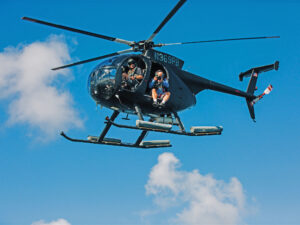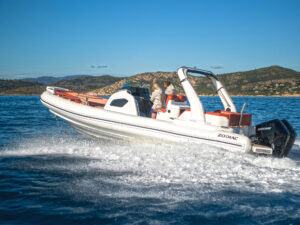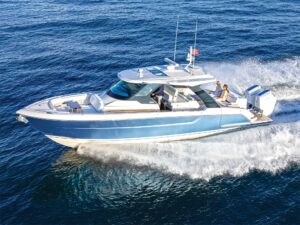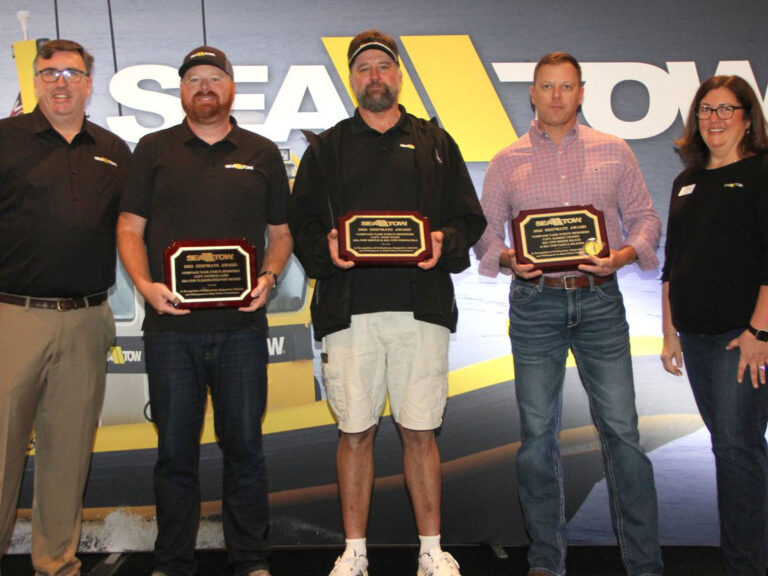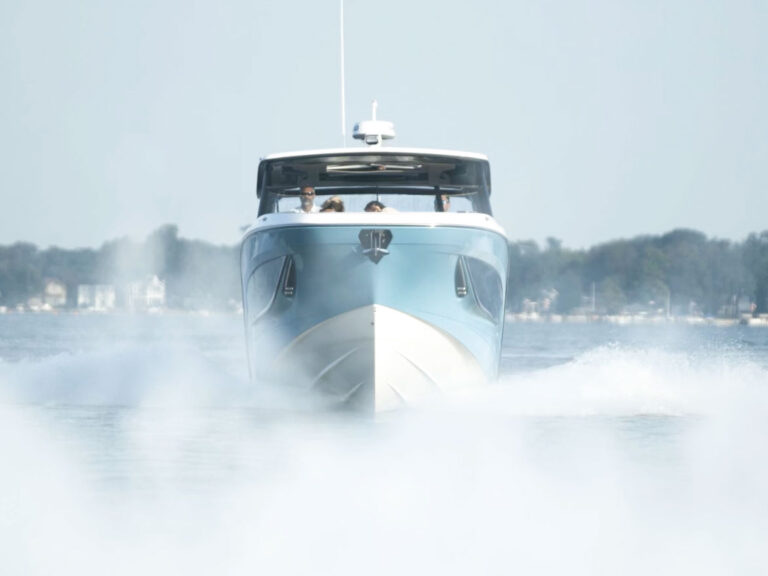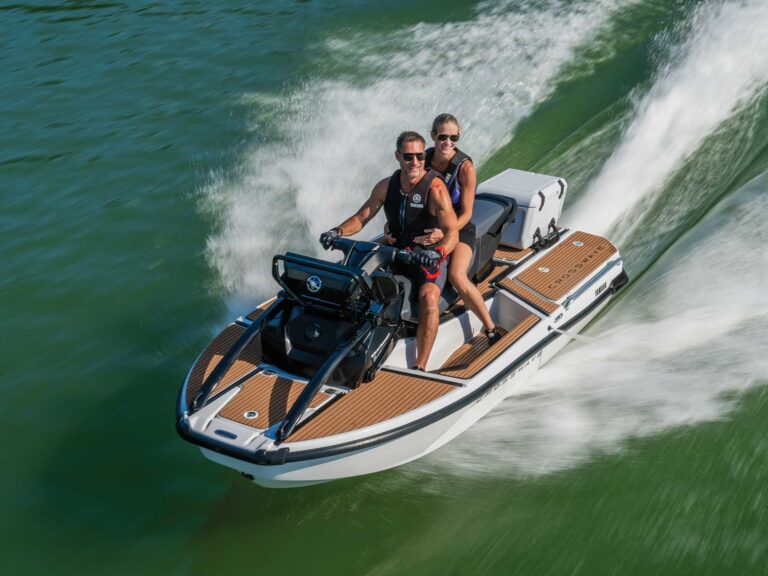The biggest trend in outboards in the past decade is, well, everything’s getting bigger. The rise of mega-center-consoles — boats that are 40 to 50 feet in length and powered by quad outboard installations — has both expanded the realm of outboard-powered vessels and grown the demand for engines powerful enough to push them. Enter Yamaha’s biggest and most powerful outboard engine to date, the 425 hp, 5.6L V-8 XTO Offshore.
The XTO represents a first for Yamaha in many respects. It is the first four-stroke on the market to feature direct injection, with an industry-high 12.2-to-1 compression ratio, and the first to be packaged with an electric steering system. In fact, Yamaha is touting it not merely as an outboard but as a “fully integrated power system.”
At the Yamaha test facility in Bridgeport, Alabama, I had the opportunity to test the XTO in a quad installation aboard a Grady-White Canyon 456, a triple installation on a Contender 39 Tournament ST, and a single on a Sportsman 267 Masters. If there is one word I’d use to describe the experience, it would be thrust. Yamaha claims the XTO produces 150 percent more thrust than its F350, one of the current standard-bearers in big-boat outboard propulsion. I noticed it right away on the Contender 39; while cruising at 3,500 rpm, I pushed down the throttles and felt the oomph as the triples rapidly accelerated the boat from the mid-30s to a mid-50 mph speed. With a crew of eight on board and a nearly full fuel load, I could push this boat close to 70 mph. In different conditions, Yamaha’s testers recorded a top speed of 72.7 mph at 6,000 rpm.
The other place I noticed that thrust? In reverse. Yamaha claims a 300 percent improvement in reverse thrust. I experienced that firsthand aboard the Grady-White. When we put the quads in reverse, the boat rocketed backward in a straight track. While this was impressive in terms of backing down on a fish, having that thrust in reserve really plays out in close-quarters handling and docking. Part of that comes from the increased diameter of the XTO propellers, which range from 16 to 171/8 inches.
While the XTO is ideal for big-boat applications such as the Grady-White 456, the nearly 1,000-pound engine also fared well as a single on the Sportsman 267. The lone XTO propelled the bay boat to a top-end speed exceeding 60 mph. While climbing onto plane, it didn’t display the expected squat from hanging such a beefy engine off the transom.
The XTO engines are massive, but the rigging is unobtrusive and clean. With the electric steering system, you won’t see any hydraulic lines, just a cylinder that looks like it’s part of the mounting bracket. The XTO works seamlessly with Yamaha’s Helm Master joystick technology and CL7 digital display, and the aforementioned electronic steering felt super-responsive during maneuvers at speed.
Yamaha is offering the XTO with 25-, 30- or 35-inch shafts. Pricing starts at $44,750 per engine. For more information, visit yamahaoutboards.com.

